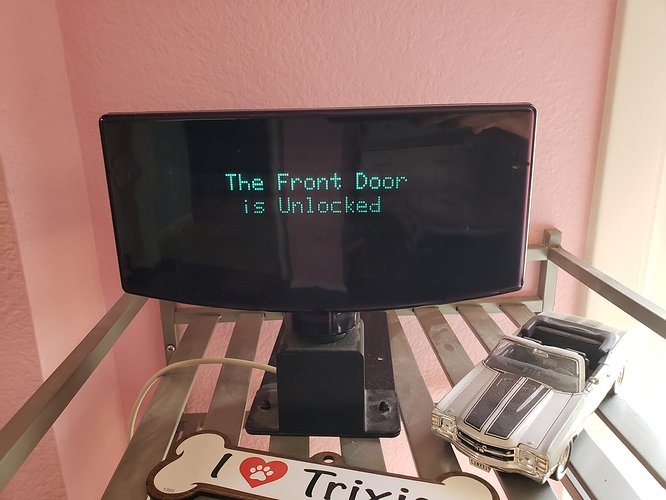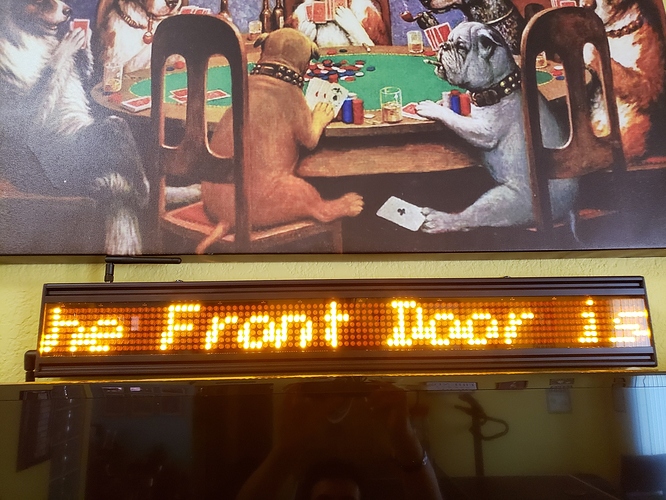I have been doing notifications for several years with serial POS displays. You can usually get them cheap on eBay ($20-$30), and they provide a nice 40 character VDF display. For my latest upgrade, I have been wifi-enabling them with a Wemos D1 and a TTL-RS232 module. They run an ESP8266 web server and I supply them with messages via an HTTP command from a Hubitat driver which is classified as a Notification device.
Recently, I picked up (for $27 via eBay) an LED bus destination sign which I also wifi-enabled (note the external antenna because the sign casing is metal. This is an RS-485 device, so I just use a TTL-RS-485 module.
The key to using these devices is to understand the text formatting commands and add them to the display text in the Arduino code.



